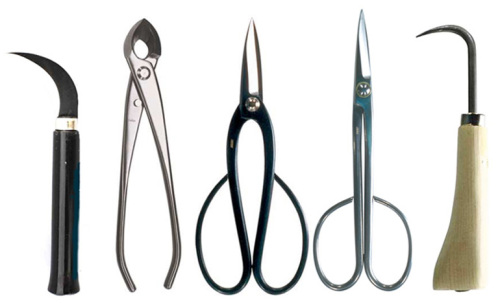A freshly transplanted Black pine. From our Masters' Series Pine book.
When it comes to transplanting, timing depends on your climate. This post is based on conditions here in northern Vermont where seasons can change rapidly and winters are very cold. If you live in a warmer climate, there is more margin for error.
One advantage to transplanting in the early fall is that when the spring season starts, little or no growing time is lost. Roots experience strong growth in the fall while the soil is still warm and after the top has shut down. By the time the tree wakes up in the spring, the roots are recovered and top growth is vigorous.
There’s one caveat however; in cold weather climates, heavy root pruning is best saved for the spring. If cold weather sets in too soon before the roots have recovered, winter survival can be threatened. Better stick to light root pruning in the fall if you live where the winters are cold.
Don’t wait too long, especially if you live in a cold climate where seasonal changes can happens quickly. Here in northern Vermont, we’ve had the best results from the last few days of August to the around the 10th of September (our first hard frost can happen any time from mid-September to early October, though there’s almost always several weeks of mild weather after that; keeping the soil warm enough for roots to recover).
It can be a good idea to lightly top prune when you transplant, especially if the roots have been severely disturbed (less foliage for the compromised roots to support). However, too much top pruning when transplanting, can stress a tree. In general, much depends on variables like the type tree, where you live, when you transplant, your aftercare and so forth.
These three items are useful transplanting. aids. Surperthrive is a vitamin and hormone plant tonic, Myconox helps replace the all-important mycorrhizal fungi, and Dyna-Gro K-L-N is a rooting compound that is formulated to reduce stress and encourage growth.
The photos and text from here down are from an 2010 Bonsai Bark post titled Transplanting Tips: An Uncommon Technique.
 Pieces of the pie. From Bonsai Today issue 39.
Pieces of the pie. From Bonsai Today issue 39.
Keeping some roots undisturbed
The technique shown here is particularly good if you want to replenish the soil while leaving some of the roots undisturbed. Doing this lessens stress and hastens recovery.
Pot sizes and shapes
This technique is useful when you want to move a tree from a larger to a smaller pot, or into a pot that has a different shape. It also works when you want to replenish some of the soil and then put the tree back into the same pot and is particularly useful for repotting forest plantings.
Potbound trees
This technique is particularly good when dealing with potbound trees. If the roots aren’t well enough established to hold the soil together when you take the tree out of the pot, this technique won’t work.
Before. A well developed Satsuki azalea in the wrong pot.
Cutting corners. Because you’re going from a rectangular pot to a round pot, you start by cutting off the corners.
Removing the bottom roots. With potbound trees you want to remove some of the lower roots. This encourages roots to spread out rather than grow down; because the tree mirrors the roots, it encourage the above ground growth to spread, which is want you usually want with bonsai. Another reason to remove the bottom roots is to make more space to replenish the soil.
Most of the information and photos in this post have already appeared here on Bonsai Bark. Because it’s so seasonally pertinent and because we have so many new readers, it’s always worth another go. Here’s the original post that started it all.
 25% off Koyo Bonsai Tools. Good tools yield good results
25% off Koyo Bonsai Tools. Good tools yield good results
and Koyo Japanese Bonsai Tools are among the best
Additional 5% off all Stone Lantern orders 100.00+